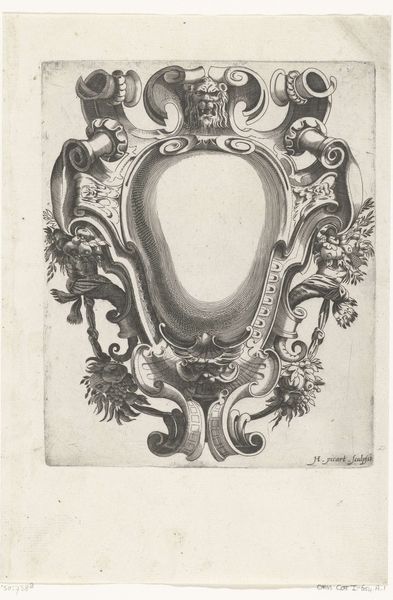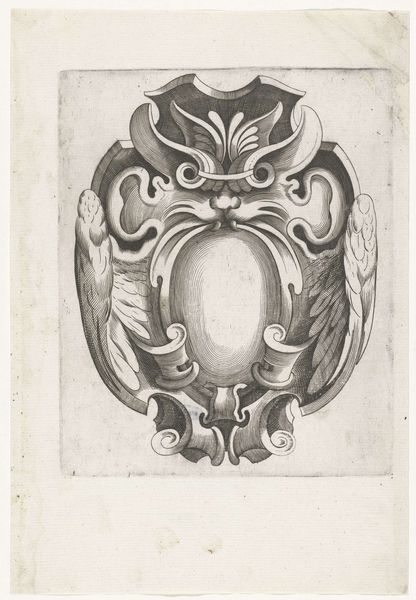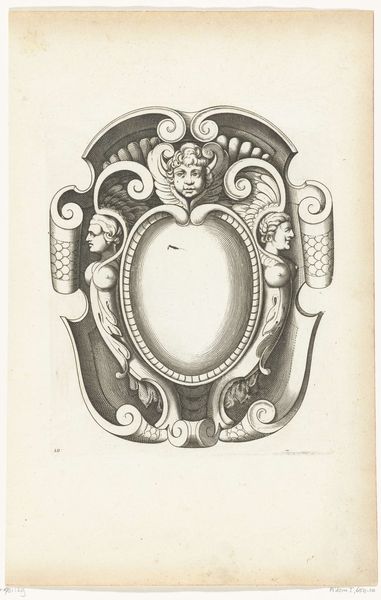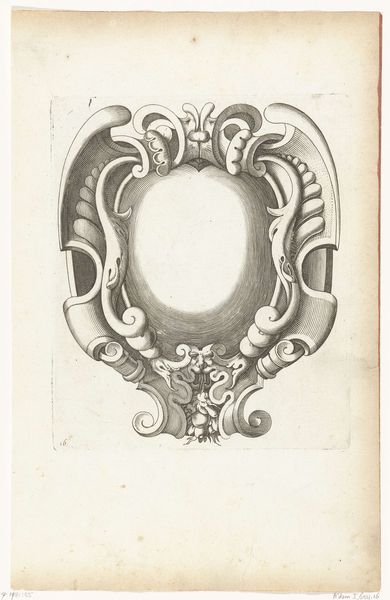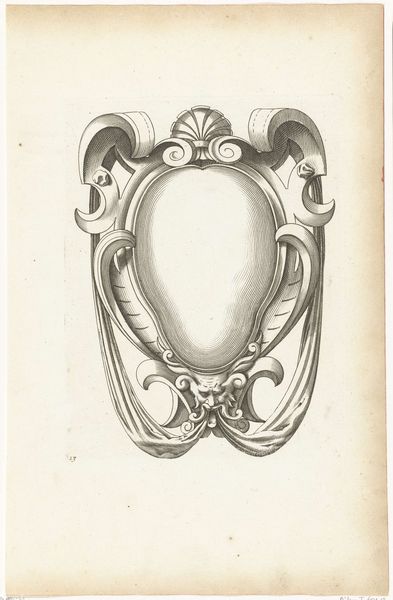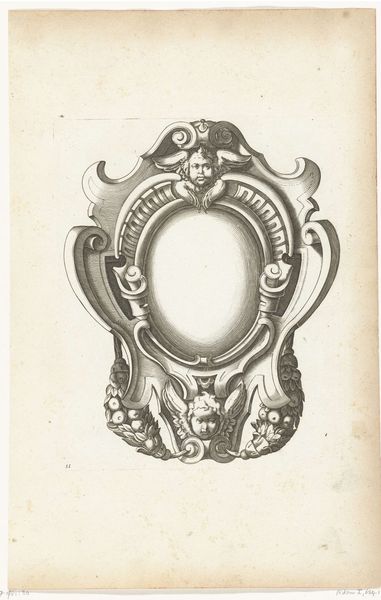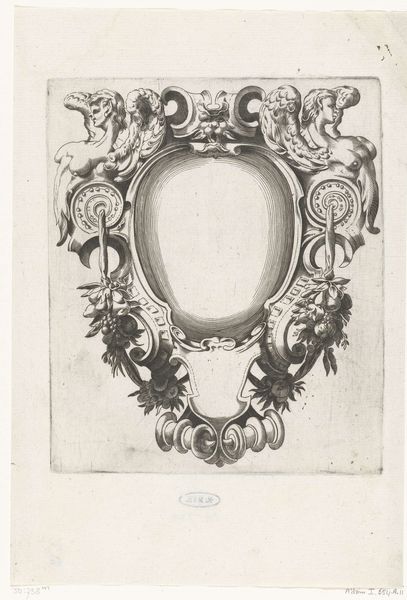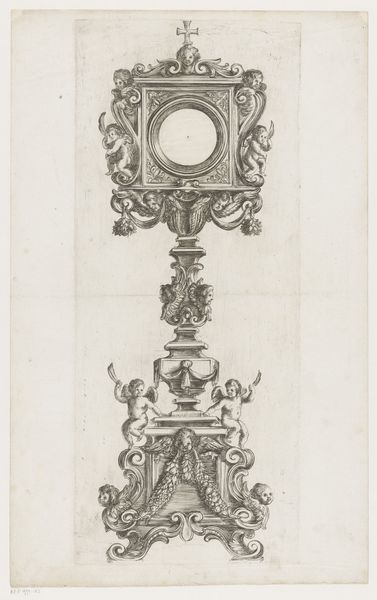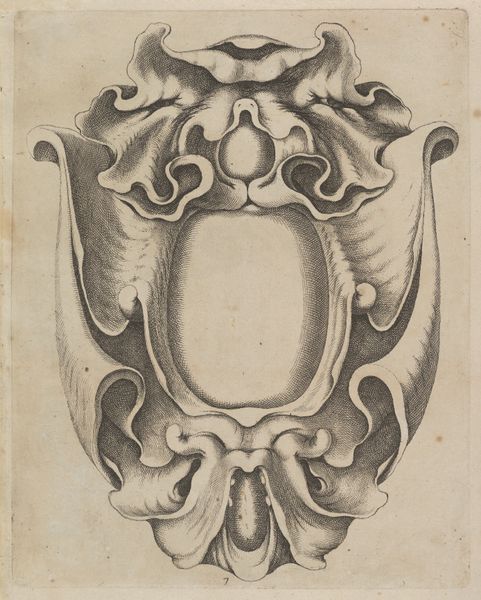
graphic-art, print, engraving
#
graphic-art
#
baroque
#
pen drawing
# print
#
old engraving style
#
geometric
#
line
#
pen work
#
decorative-art
#
engraving
Dimensions: height 178 mm, width 143 mm
Copyright: Rijks Museum: Open Domain
This print by H. Picart presents an ornate cartouche, crowned by a cherubic child’s head. Such cartouches were not mere decorations; they were frames for inscriptions, heraldry, or portraits, meant to elevate the content within. The cherub, a motif descending from classical Cupid figures, gained prominence in Renaissance art as a symbol of divine love and innocence. Here, it sits atop a structure flanked by stylized wings. These wings, while aesthetically pleasing, echo the ‘Victory’ figures of antiquity and resurface later in spiritual contexts, such as the archangels. The human psyche, with its enduring fascination for the ethereal, continually resurrects these symbols. This cyclical progression suggests the unconscious yearning for higher wisdom. These motifs transcend mere visual appeal, engaging viewers on a deep, subconscious level. They are a testament to the powerful, ever-evolving nature of cultural memory.
Comments
No comments
Be the first to comment and join the conversation on the ultimate creative platform.
